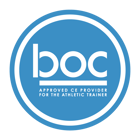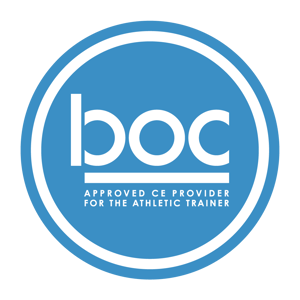Lateral & Medial Epicondylitis (Tennis or Golf, Anyone?)

Description
This course was written to help rehab professionals understand, evaluate, and treat tennis elbow (lateral epicondylitis) and golfer’s elbow (medial epicondylitis) in the adult population. The course consists of a review of elbow and forearm anatomy as it relates to these two disorders, etiology and basic pathophysiology of epicondylitis and epicondylosis, signs and symptoms related to these tendinopathies, evaluation tips, differential diagnosis, and a variety of therapeutic treatment approaches. It also discusses when surgical intervention may be necessary, and the types of surgery most often performed, as well as post-surgical therapy care, long-term prognosis for the disorders, and preventing recurrence. In addition, the course presents an overview of radial tunnel syndrome as it relates to lateral epicondylitis. The course is designed to help therapists and therapy assistants achieve the best possible functional outcomes with patients, helping them meet functional goals that may even incorporate returning to sports such as tennis and golf.



Physicourses is an AOTA Approved Provider of professional development. Course approval ID# 6295. This distance learning-independent course is offered at 0.6 CEUs Intermediate Level, OT Service Delivery, Foundational Knowledge. AOTA does not endorse specific course content, products, or clinical procedures.
Available Course Credits
| Alaska State PT & OT Board | 6.00 | ||
 |
AOTA | 6.00 | |
| Arizona State Board of Physical Therapy | 6.00 | ||
| Arkansas State Board of Physcial Thearpy | 6.00 | ||
 |
BOC | 6.00 | |
| California Physical Therapy Board | 6.00 | ||
| Colorado Division of Professions and Occupations | 6.00 | ||
| Connecticut Department of Public Health | 6.00 | ||
| Delaware Examining Board of Physical Therapists and Athletic Trainers | 6.00 | ||
| District Of Columbia Department of Health | 6.00 | ||
| FPTA | 6.00 | ||
| Georgia State Board of Physical Therapy | 6.00 | ||
| Hawaii Board of Physical Therapy | 6.00 | ||
| Idaho Physical Therapy Licensure Board | 6.00 | ||
| Indiana Physical Therapy Board | 6.00 | ||
| Iowa Board of Physical Therapy and Occupational Therapy | 6.00 | ||
| Kentucky Board of Physical Therapy | 6.00 | ||
| Louisiana Physical Therapy Board | 6.00 | ||
| Maine Board of Physical Therapy | 6.00 | ||
| Maryland Board of Physical Therapy Examiners | 0.60 | ||
| Massachusetts Board of Allied Health Professionals | 6.00 | ||
| Michigan Board of Physical Therapy | 6.00 | ||
| Mississippi State Board of Physical Therapy | 6.00 | ||
| Missouri Advisory Commission for Physical Therapists | 6.00 | ||
| Montana Board of Physical Therapy Examiners | 6.00 | ||
| New Mexico Physical Therapy Board | 6.00 | ||
| North Carolina Board of Physical Therapy Examiners | 6.00 | ||
| North Dakota Board of Physical Therapy | 6.00 | ||
| Office of Professional Regulation, Vermont Secretary of State | 6.00 | ||
| Oklahoma Board of Medical Licensure and Supervision - Physical Therapy | 6.00 | ||
| Oregon Board of Physical Therapy | 6.00 | ||
| Pennsylvania Bureau of Professional and Occupational Affairs - Physical Therapy | 6.00 | ||
| Physical Therapy Governing Board New Hampshire | 6.00 | ||
| South Carolina Board of Physical Therapy | 6.00 | ||
| South Dakota Physical Therapy License Board | 6.00 | ||
| State of Alabama Board of Physical Therapy | 6.00 | ||
| State of Rhode Island Department of Health | 6.00 | ||
| Tennessee Board of Physical Therapy | 6.00 | ||
| Utah Physical Therapy Licensing Board | 6.00 | ||
| Virginia Board of Physical Therapy | 6.00 | ||
| Washington State Board of Physical Therapy | 6.00 | ||
| West Virginia Board of Physical Therapy | 6.00 | ||
| Wisconsin Physical Therapy License Board | 6.00 | ||
| Wyoming Board of Physical Therapy | 6.00 |
Course Content
| 418b Lateral & Medial Epicondylitis (Tennis or Golf, Anyone?) Copy | Module | ||
| Course Evaluation | Module |
Sarah R.Stillings, MA, PT, MPT, CHT
Sarah R. (Sally) Stillings is a PT and Certified Hand Therapist in Texas. She received her physical therapy degree from the University of North Carolina at Chapel Hill. Prior to becoming a therapist, Sally taught university-level writing courses and was assistant editor of The Journal of Craniomandibular Practice. In her extensive career as a PT, she has held a variety of clinical, teaching, administrative, and business roles, including general PT practitioner, upper extremity specialist, clinic manager, hand therapy clinic coordinator, continuing education (CE) instructor, and CE course administrator. She has also served as Executive Director of the Kellermann Foundation, a U.S. nonprofit organization supporting healthcare and community development in Uganda, East Africa. Her work now focuses on creating evidence-based CE materials for rehab professionals. Sally is a lifelong runner who celebrates all those who cover the ground.

After successfully completing this course, the learner should be able to:
- Recall the definitions of lateral and medial epicondylitis
- Identify possible causes of the pathology
- Recall the pathophysiology and etiology of the epicondylitis disorders
- Recognize signs and symptoms that patients with these disorders typically exhibit
- Recall standard methods used to diagnose these disorders
- List interventions typically used to treat the disorders
- Identify treatment approaches for managing epicondylitis
- Recall the long-term prognosis of these tendinopathies
- Recall surgical interventions and postoperative rehabilitation
- Differentiate radial tunnel syndrome from lateral epicondylitis
418b Lateral and Medial Epicondylitis—Table of Contents
HOUR 1
Course Instructions 2
About the Author and Course Description 3
Course Objectives 4
Table of Contents 5
Introduction: Definitions and History 7
Chapter 1: Applied Anatomy 11
Anatomy Review 11
Bony Anatomy of the Elbow and Forearm 11
Dorsal Forearm Musculature 12
Volar Forearm Musculature 16
Nerves of the Elbow and Forearm 17
HOUR 2
Chapter 2: Pathophysiology and Presentation 22
Pathology 22
Epidemiology 24
Mechanisms of Injury of Lateral Epicondylitis 24
Signs and Symptoms of Lat. Epicondylitis 27
Mechanisms of Injury of Medial Epicondylitis 28
Signs and Symptoms of Med. Epicondylitis 30
Chapter 3: Diagnosis and Evaluation 31
Differential Diagnosis: Lateral Epicondylitis 31
Differential Diagnosis: Medial Epicondylitis 33
Evaluation for Epicondylitis 34
HOUR 3
General Medical History 34
History of Current Complaint 35
Objective Evaluation 38
Measurements and Physical Exam: Lat. 38
Measurements and Physical Exam: Med. 42
Chapter 4: Treatment Approaches 45
Interventions 47
Rest 47
Splinting and Bracing 47
Activity Modification 49
HOUR 4
Stretching 50
Joint Mobilization 53
Soft Tissue Mobilization 54
Postural Issues 54
Modalities 55
Cold and Heat 55
Ultrasound 57
Laser Therapy 57
Electrical Stimulation 58
Phonophoresis and Iontophoresis 58
Strengthening 59
Sport-Specific Training 61
Medical Intervention 62
Medication 62
Steroid Injection 63
Blood and PRP Injections 63
Alternative Treatments 64
HOUR 5
Chapter 5: Surgical Intervention 66
Lateral Epicondylitis Surgery 66
Postoperative Management 67
Medial Epicondylitis Surgery 68
Postoperative Management 69
Chapter 6: Radial Tunnel Syndrome 71
Considerations 71
Evaluation and Differential Diagnosis 72
Treatment Considerations 73
Surgical Intervention 74
HOUR 6
Conclusion 75
Case Study 76
Appendix: Indiana Protocols 81
References 82
Customer Cancellation:
Customers may request cancellations of their enrollment or subscription in our digital or live educational services, subject to the terms outlined below. Cancellation requests must be made in writing, either through email or through our designated cancellation process.
Refund Policy:
Refunds will be provided according to the following guidelines: i) For cancellation requests made within 5 days of the initial enrollment or subscription, a full refund will be issued. Refunds will be issued using the same method of payment used for the original transaction, unless otherwise agreed upon in writing.
Provider Cancellation:
In the event Physicourses cancels your course, you will be issued a full refund or transfered to a course of equal or greater value.
Physicourses Conflict of Interest Disclosure Policy for Authors and Staff:
All persons in a position to control the content of any educational activity (authors or staff from Physicourses) are required to disclose to Physicourses any potentially biasing or potential conflict of interests in relationships of a financial, professional, or personal nature.
The intent of this disclosure is not to prevent authors or staff with commercial affiliations from planning an educational activity, or to prevent a Presenter with commercial affiliations from presenting, but rather to inform Physicourses of any potentially biasing relationships so that conflicts are resolved prior to the activity.
It is the policy of Physicourses to ensure balance, independence, objectivity and scientific rigor in all of its continuing education activities. All relevant conflicts of interest identified by the planner, presenter, or as determined by Physicourses will be disclosed to the audience verbally and in writing prior to the start of the presentation.
Definitions for Authors/Staff:
Relevant financial relationships are those relationships in which you benefit by receiving a salary, royalty, intellectual property rights, gift, speaking fee, consulting fee, honoraria, ownership interest (e.g., stocks, stock options, or other ownership interest, excluding diversified mutual funds), or other financial benefit. Financial relationships can also include “contracted research” where the institution gets the grant and manages the funds and you are the principal or named investigator on the grant.
Educational Level: Intermediate
Target Audience: PT, PTA, OT, OTA, ATC
Course Completion Requirements: Passing an online exam with 70% or greater will be required to earn continuing education credit
This course is approved for 0.6 CEUS. 6 contact hours
Physicourses is committed to ensuring accessibility to the most extensive audience possible. If you have any questions or special needs requests, please contact us at info@physicourses.com.